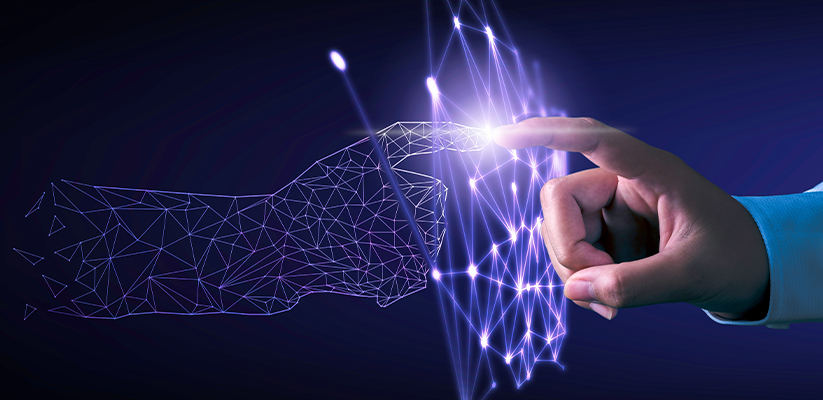
In previous articles in this series, I examined the challenges facing energy utilities and how data and analytics can help to overcome them. In earlier posts, I discussed the challenges of decarbonization and electrification. In this post, I’m focusing on the challenges and opportunities posed by digitalization.
Energy utilities, like many other companies, are generating and using vast amounts of data, which in this case can come from smart meters as well as power generation and distribution equipment. Data types include weather data or market data for the energy traders. It can even come from the utilities’ customers. Harnessing the value of this data enables the utilities to gain such benefits as providing better customer service by operating generation capacity more efficiently. For this reason, digitalization transformation, through which companies can better harness the value of their data, is a strategic initiative for most energy utilities, especially in the face of competition from the more nimble ‘smart grid’ companies.
However, digitalization transformation is not without its challenges. In this blog post, I will cover some of these key challenges and explain how energy utilities can use a logical approach to data management to overcome them.
Unifying the Data
Like many large organizations, the energy utilities typically have many legacy systems that act as data silos. These legacy systems were often designed as self-contained application suites, and it can be difficult to get data out of these silos. This hinders the ability of the utility to fully utilize the data, and it slows down the adoption of new technologies and processes. The Denodo Platform, a logical data management platform powered by data virtualization, acts like a bridge between these legacy systems and more modern applications and tools. It can access the data in the legacy systems using the available integration points—typically complex and proprietary APIs—and make this data available through standard interfaces and formats. This enables the utilities to extract value from these legacy systems and protect their investments in them, while seamlessly adopting and integrating new digital solutions.
Data is also often stored in many diverse data stores in different departments across the energy utility. This fragmentation inhibits the flow of information throughout the organization and hampers efforts to gain a holistic view of operations. This, in turn, also results in inefficiencies and missed opportunities for process improvement and optimization. The Denodo Platform can create a unified data layer that acts as a single, consistent view of all of a utilities’ data. This makes it easier to find and access the data from the different data stores as data consumers do not need to navigate the complex, constantly changing data infrastructure. This ease of access improves and accelerates the flow of information throughout the organization and facilitates faster, more accurate decision-making.
Gaining Control over the Infrastructure
Energy utilities manage a vast network of physical assets, from power plants to grid infrastructure. As these assets become more diverse and more distributed, it becomes harder and harder to manage and operate them efficiently. Newer, renewable energy assets are often in remote, hard-to-reach locations, such as offshore wind farms, making maintenance more challenging. Data collected from these assets, in the form of embedded sensor data, can provide valuable insights into the workings of the equipment. However, the sensor data is often trapped in Internet of Things (IoT) data lakes, and it is often separated from the critical contextual data that makes it possible for analysts to derive meaningful insight from it. Several organizations have used the Denodo Platform to seamlessly integrate this data, to provide an insights-rich environment for advanced analysis, such as predictive analytics for preventative maintenance or manufacturing-process optimization, including the implementation of a “green cockpit” for energy efficiency.
Finally, as utilities shift towards cleaner and more sustainable energy sources, they must integrate these renewables into their existing energy mix. This requires careful management of the variability of renewable energy generation and optimizing the use of storage solutions. I discussed this topic in more detail in an earlier post. Harnessing and properly utilizing data—from renewable generating sources, from smart meters, from weather forecasts, etc.—can ease the challenges of integrating the new energy sources into the grid.
Digitalization, Simplified and Accelerated
Energy utilities do face challenges with digitalization. But the optimal use of data, combined with advanced analytics, can address these challenges and create real opportunities for becoming more efficient and more customer focused and for being able to reliably provide a clean supply of energy. Utilities can make their vast collection of data more readily available, so users can get insights and drive better decisions and more efficient operations. The Denodo Platform enables users to get the data they need, when they need it, accelerating digitalization initiatives within the energy utilities.
In my next post in the Energy Utilities Series, I’ll cover the challenges of regulatory compliance.
- The Energy Utilities Series: Challenge 3 – Digitalization (Post 4 of 6) - December 1, 2023
- How Denodo Tackled its own Data Challenges with a Data Marketplace - August 31, 2023
- The Energy Utilities Series: Challenge 2 – Electrification (Post 3 of 6) - July 12, 2023
